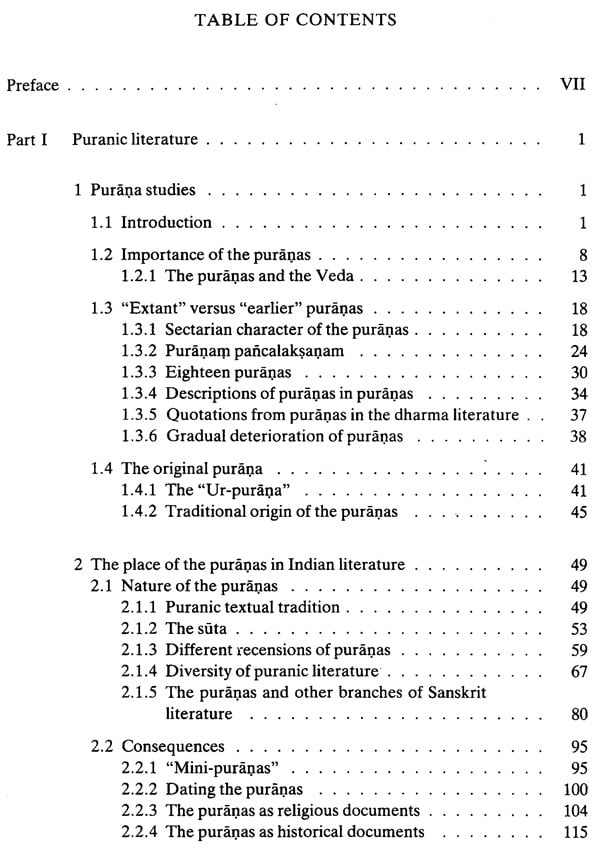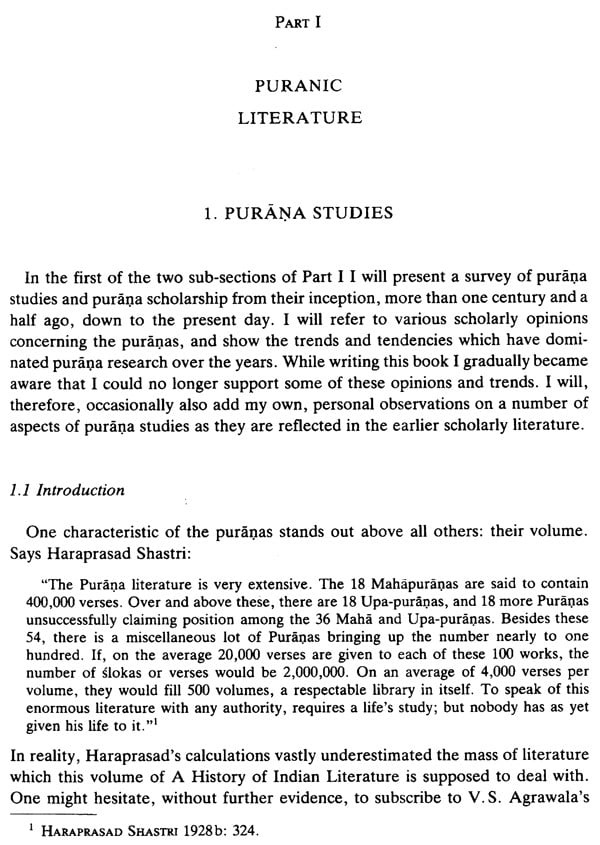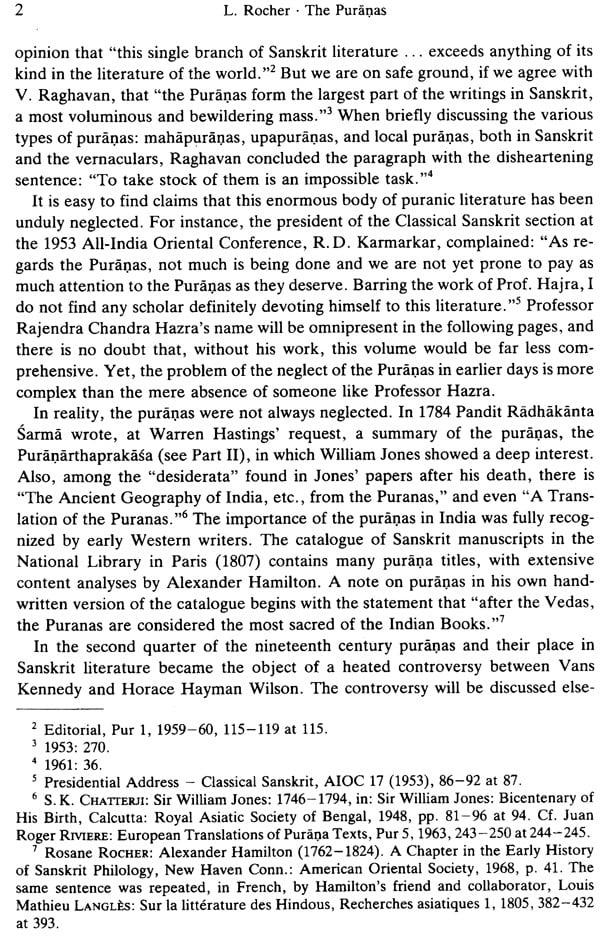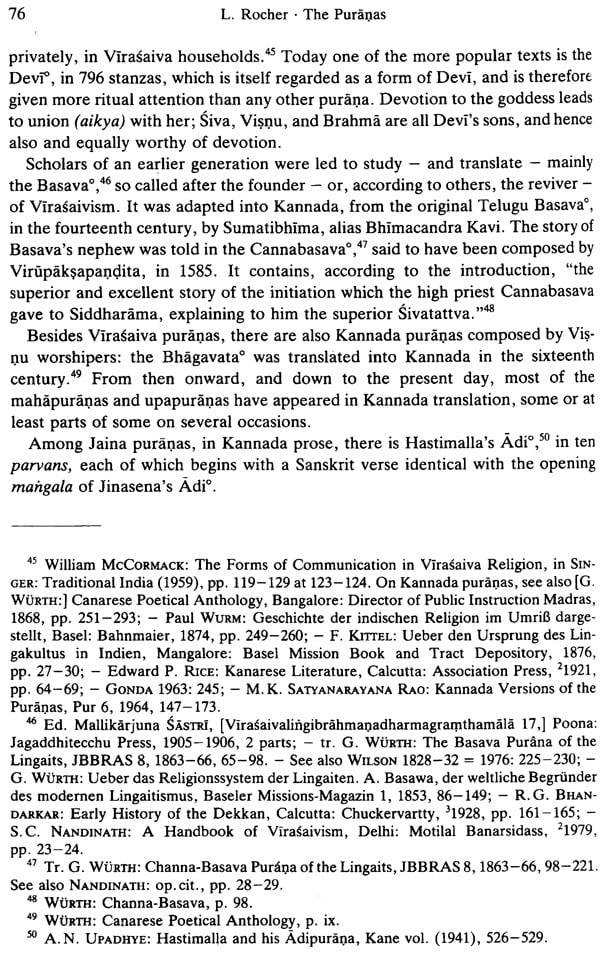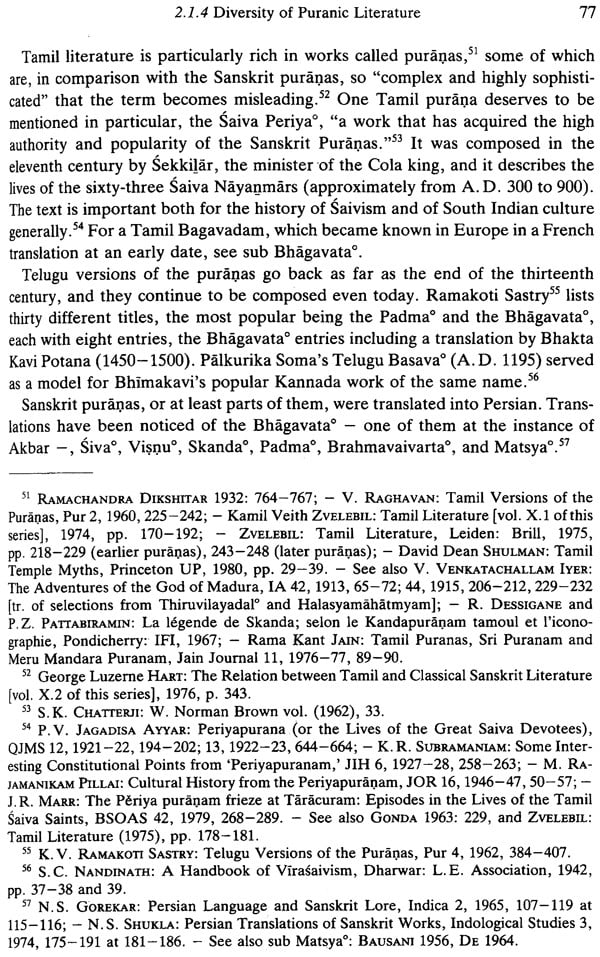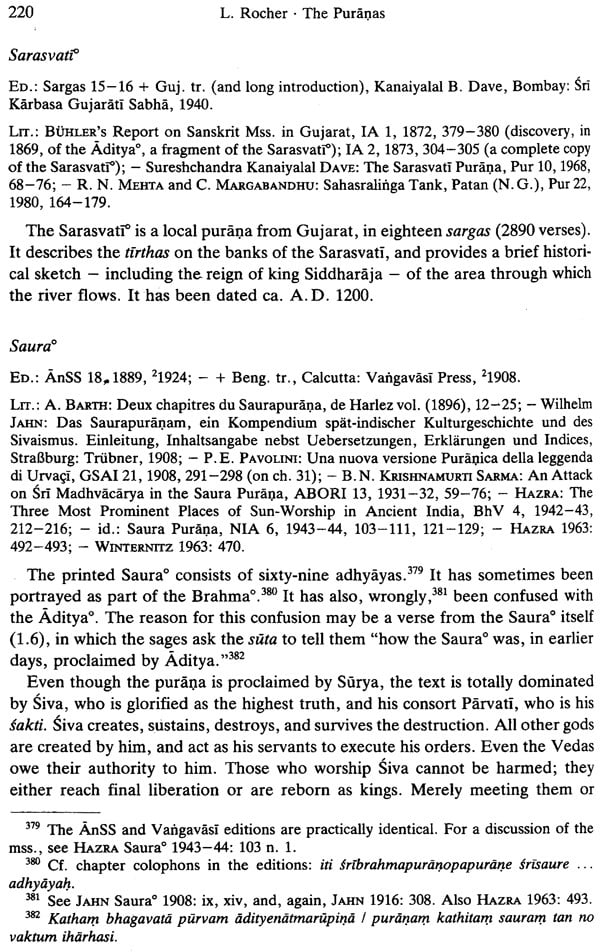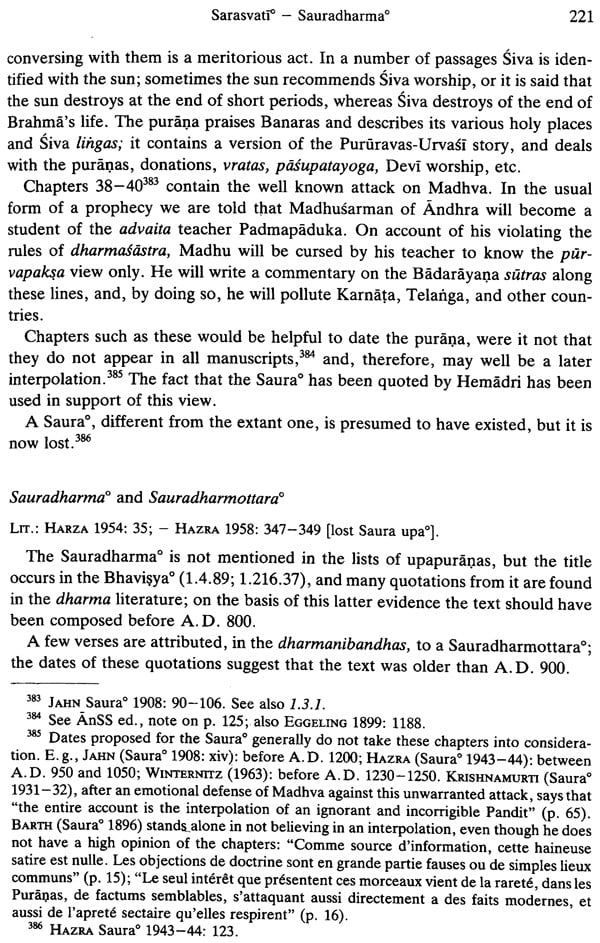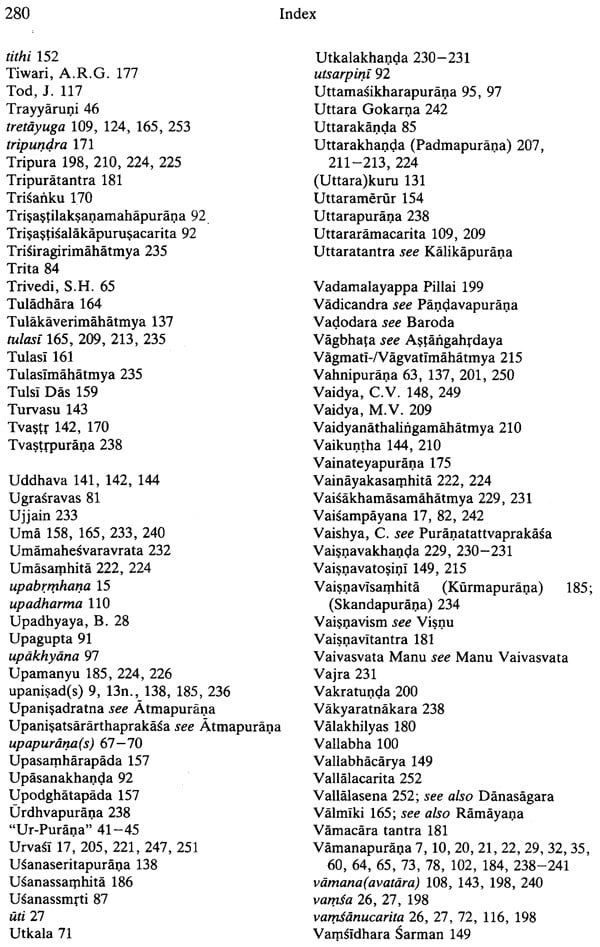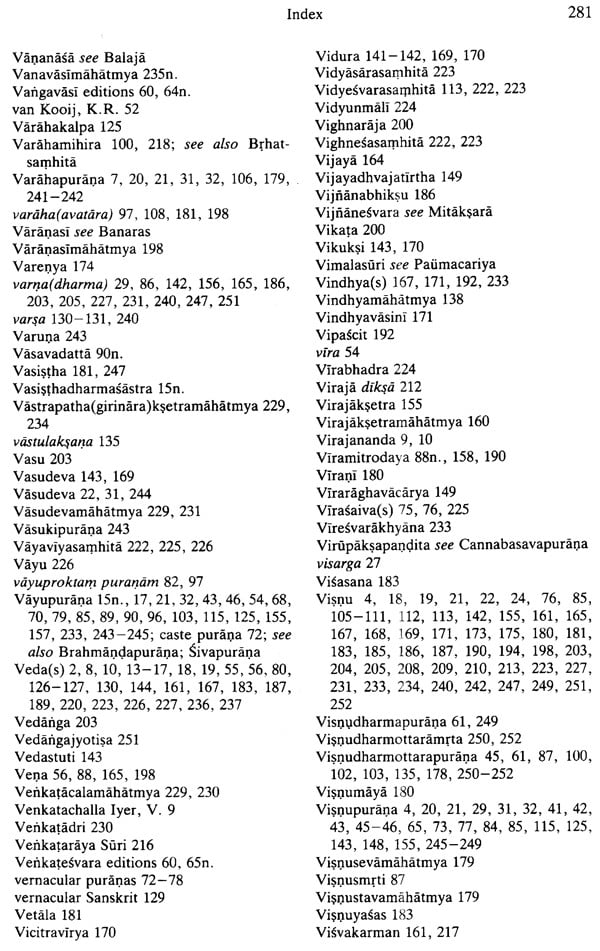
The Puranas (A History Of Indian Literature, Volume-2, Fasc-3)
Book Specification
| Item Code: | NBZ819 |
| Author: | Ludo Rocher |
| Publisher: | Manohar Publishers and Distributors |
| Language: | English |
| Edition: | 2021 |
| ISBN: | 9789388540360 |
| Pages: | 292 |
| Cover: | HARDCOVER |
| Other Details | 9.50 X 6.50 inches |
| Weight | 540 gm |
Book Description
Abbreviated bibliographical references are of two types:
(1) An author's name, followed by a date, a colon, and a page number (e.g., HAZRA 1940:52), refers to an entry in the General Bibliography at the end of the volume. When the General Bibliography contains more than one publication by the same author in the same year, they are distinguished by adding a and b after the publication date (e.g., HARAPRASAD SHASTRI 1928a: lxxxv and HARAPRASAD SHASTRI 1928b:324). Notice that the publication dates, in chronological order for each author, are indicated at the end of the entries.
(2) An author's name, followed by a purana title, a date, a colon, and a page number (e.g., HAZRA Siva" 1953:47), refers to an entry in the bibliography prefixed to each purana in Part Two. All lists of editions, translations, etc. are arranged in chronological order, with the publication years at the end of the entries.
Owing to the integration of a large variety of heterogeneous elements the Indian civilization constitutes a very complex and as to it~ main current remarkably continuous whole. As it covers the whole of life it has social and religious, economic, artistic and literary aspects. From the religious point of view it is an utterly diverse conglomerate of cults, practices, doctrines and ways of life. Viewed from the angle of sociology it is a stratified system of social classes which is, at least in traditional India, not only given religious sanction but also, like many other fields of human effort, impregnated by a characteristic view of life and the world. The more or less constant elements of this conglomerate, the main features of the Indian 'great tradition' are, to a considerable extent, the belief in an eternal, fundamental principle (Brahman), the ultimate source and goal of all existence, the One that is the All and sole reality; the recognition of a pristine body of religious literature as an absolute authority, however unman its contents; a deep-rooted want for assuming, maintaining, and clinging to continuity; a craving for a firm foundation on which to build one's life and ideals, and the confidence that one's own existence and the culture of the community to which one belongs are founded on an eternal and infallible basis; the belief in Karman, and its complement, the almost generally accepted doctrine of transmigration; the conviction that man's best Endeavour should be directed towards escaping from impermanence or final emancipation; a complex 'polytheism' subsumed in a fundamental monotheism; a tendency to mysticism and monistic philosophy; a propensity to assimilate rather than to exclude or to abandon what once has been adopted.
Book's Contents and Sample Pages
